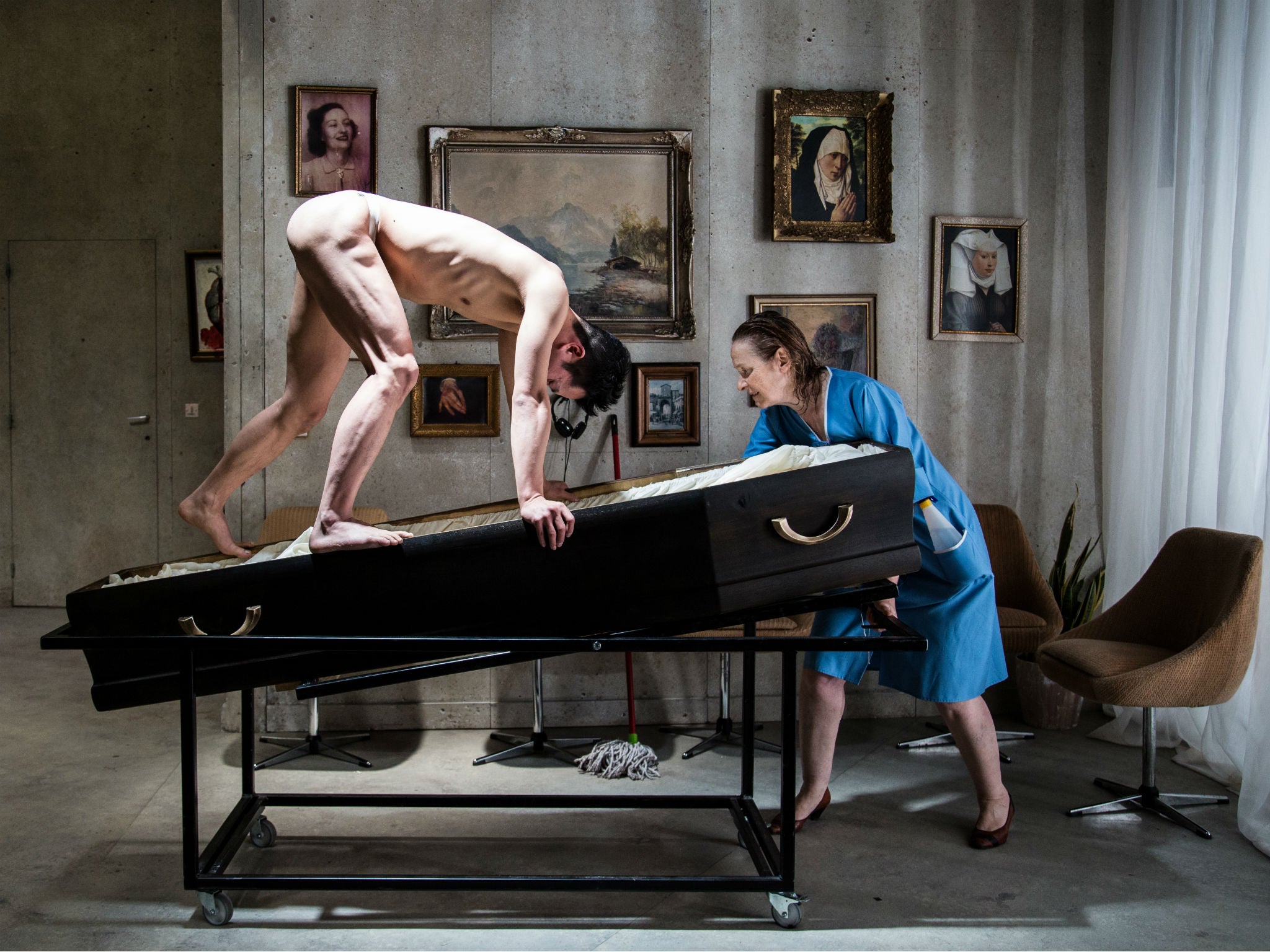Mother, Barbican Theatre, London, review: A brilliant mix of naturalistic observation and weirdness
Part of the London International Mime Festival, 'Mother' is a strange exploration of motherhood and loss, with a cast of singers, dancers and contortionists

In Peeping Tom’s Mother, you maybe should believe your ears. A woman walks across the apparently dry floor of a museum, but with every step we hear a splash of non-existent water. The sound is unnervingly precise – a dab of the foot here, the slosh of a bolder step, until she plunges to the floor, risking drowning.
Peeping Tom’s last London visit won the Belgian physical theatre company an Olivier award for the memorably odd 32 rue Vandenbranden. Mother (Moeder), part of London International Mime Festival, is a rich, strange exploration of motherhood and loss, with a cast of singers, dancers and contortionists.
Gabriela Carrizo’s production opens with a funeral in a recording studio, a glassed-in box at the back of Amber Vandenhoeck’s naturalistic set. Breath seems to be coming from the coffin; with each sound, the red recording light comes back on, then vanishes.
The space outside the glass box is both a home and a museum, filled with art works, visitors and a family of museum staff. One sculpture shows a man in a loincloth poised over a coffin; the cleaner polishes his leg, then kisses it, hastily wrapping the sculpture up for closing time. A woman steals a painting, trying to hide it under her skin-tight dress. Too embarrassed to confront her, the staff simply follow her about, dancing the twist.
The museum setting is both an image of memory – what people choose to hang on to – and a daily round of chores and interruptions, both within the family and beyond it. The paintings bleed, or threaten to swallow people. When characters try to keep their feelings under wraps, the art and the soundtrack keep exposing them.
Mothers are awkwardly present, and absent: dead but talked about, popping up to wave hello when mentioned in their children’s monologues. Liquids bubble away on the soundtrack, suggesting everything from flooding to bodily fluids. Even the coffee machine becomes a bizarre maternal figure, while the family around it bicker over the correct pronunciation of “espresso”.
Mother’s imagery is a brilliant mix of naturalistic observation and weirdness, sometimes gruesome and often very funny. In a childbirth scene, the mother’s howl of labour pain turns into a rock ballad mid-breath, her medical team producing instruments from nowhere. A woman paces the floor, rocking and shushing a bundle in her arms, then flips a somersault to land flat on her back. Then she does it again, a convulsive cycle of gymnastics and care.
mimelondon.com
Join our commenting forum
Join thought-provoking conversations, follow other Independent readers and see their replies
Comments